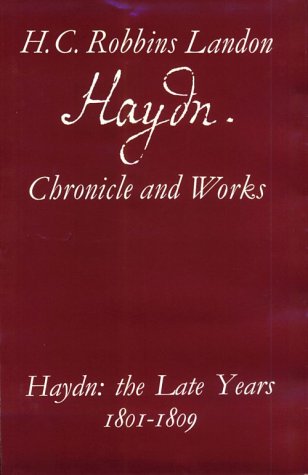Haydn Chronicle & Works S.
2 total works
The central feature in this volume is The Seasons, and the author provides a detailed analysis, with musical examples, of the oratorio and a history of its origins and development; its libretto, by Baron Gottfried van Swieten (also responsible for the libretto of The Creation), was largely based on the epic poem of the same name by the eighteenth-century Scottish poet James Thomson. Drawing on contemporary documents and newspapers, the author provides a vivid impression of the reactions to Haydn's oratorio following its first performances in 1801. Haydn's posthumous reputation, now fully restored after a long period of neglect, is summed up in a section entitled 'Haydn and Posterity', and this volume also contains notable portraits of the composer (by Grassi, Neugass etc.) in his later years, as well as important documents, including Haydn's last Will, the list (compiled c. 1804-5 by his faithful copyist Johann Elssler) of the contents of his music library, and the list of effects to be sold after his death. This final volume also contains the master Bibliography for the complete biography, listing all the relevant literature relating to the composer's long career and providing an essential source of references for the student of Haydn in particular and of eighteenth-century music and culture in general.
The author treats the life and work of the composer in its chronological context, with detailed discussion, illustrated with musical examples, of the major works. The Chronicle is based principally on contemporary newspaper accounts, diaries and correspondence. In both its scale and complexity it is Haydn's greatest masterpiece - The Creation - which provides the major point of interest. The development of the work is traced from the libretto sketch by Baron Gottfried van Swieten which Haydn brought back from London, through the various stages of drafting (many of Haydn's preparatory sketches for the introduction - 'Chaos' - and various numbers in the Oratorio are reproduced as musical examples) to completion and first performance. Its subsequent publication, in 1800, and circulation to subscribers all over Europe was supervised by Haydn himself, and his list of the original subscribers is included as an appendix to the main discussion of the work which was to prove the crowning achievement of the composer's career up to the turn of the century.

